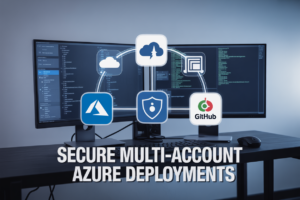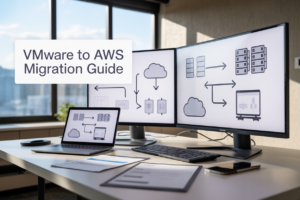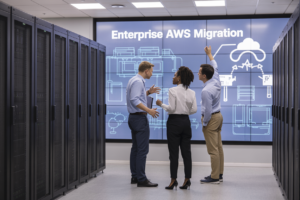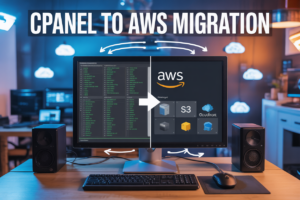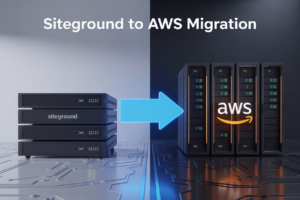VMs vs. Containers: Transforming Compilation Pipelines for Efficiency
Modern development teams face a critical choice when optimizing their compilation pipelines: should they stick with traditional virtual machines or embrace containerization? This decision directly impacts build speeds, resource usage, and overall development workflow efficiency.
Who This Guide Is For:
This analysis targets DevOps engineers, build system architects, and development teams looking to optimize their CI/CD pipeline performance. Whether you’re managing large-scale enterprise builds or streamlining startup development processes, understanding the trade-offs between virtualization vs containerization will help you make informed infrastructure decisions.
What We’ll Cover:
We’ll dive deep into compilation pipeline performance analysis, comparing how VMs and containers handle different build scenarios. You’ll discover when virtual machines development environments excel for complex builds and when Docker compilation offers superior speed and resource efficiency. Finally, we’ll explore hybrid deployment strategies that combine the best of both worlds to maximize your build environment optimization results.
The right choice between VMs and containers can cut your build times in half and dramatically improve developer productivity. Let’s explore which approach works best for your specific compilation needs.
Understanding Virtual Machines and Containers in Development Environments
Core architectural differences that impact compilation speed
VMs vs containers showcase fundamentally different approaches to resource management during compilation pipelines. Virtual machines create complete hardware abstractions with dedicated kernel instances, while containers share the host OS kernel through lightweight isolation layers. This architectural distinction directly affects compilation speed – VMs consume more memory and CPU overhead during builds due to hypervisor management, whereas containers achieve faster execution through reduced system calls and shared kernel resources. Container orchestration platforms like Docker streamline build processes by eliminating hypervisor bottlenecks that traditionally slow VM-based compilation workflows.
Resource allocation patterns for build processes
Build environment optimization varies significantly between virtualization vs containerization approaches. VMs allocate fixed memory and CPU resources at startup, creating predictable but potentially wasteful resource usage patterns during compilation. Containers dynamically share host resources, allowing multiple build processes to utilize available CPU cores and memory more efficiently. This difference becomes critical in CI/CD pipeline performance scenarios where resource contention can bottleneck parallel builds. Development workflow efficiency improves with containers since they can scale resources up or down based on actual compilation demands rather than pre-allocated VM specifications.
Isolation levels and their effect on pipeline performance
Container orchestration provides process-level isolation while VMs offer complete system isolation, each impacting compilation pipeline behavior differently. VM isolation prevents interference between concurrent builds but creates overhead that slows individual compilation tasks. Container isolation strikes a balance – builds remain separate while sharing kernel optimizations and cached libraries. This shared-kernel approach in Docker compilation environments reduces duplicate memory usage and accelerates dependency resolution. However, VMs excel when compilation requires specific kernel versions or drivers that containers cannot provide through their lightweight isolation model.
Startup time comparison for continuous integration workflows
Virtual machines development environments typically require 30-60 seconds for full OS initialization before compilation begins. Containers launch in milliseconds, immediately starting build processes without boot sequences. This startup time difference becomes exponential in continuous integration workflows where hundreds of builds execute daily. Hybrid deployment strategies often combine both technologies – using containers for rapid iterative development builds while reserving VMs for comprehensive testing environments requiring complete system isolation. The speed advantage of containers transforms development productivity, especially in agile environments where quick feedback loops drive innovation cycles.
Compilation Pipeline Performance Analysis
Memory and CPU utilization patterns during builds
Compilation pipelines reveal distinct resource consumption patterns between VMs vs containers. Virtual machines typically show higher baseline memory usage due to full OS overhead, with compilation processes consuming 2-4GB additional RAM during peak build phases. Container environments demonstrate more efficient memory allocation, using only 500MB-1GB overhead while maintaining similar compilation performance. CPU utilization patterns differ significantly – VMs experience thermal throttling under sustained loads, while containers leverage host CPU resources more effectively through direct kernel access.
Build time benchmarks across different project sizes
Build performance varies dramatically based on environment choice and project complexity. Small projects (under 1000 files) show minimal differences between containerized and VM-based compilation, typically completing within 2-5 minutes. Medium-scale applications witness 15-30% faster builds in container orchestration environments due to reduced I/O overhead and streamlined dependency management. Large enterprise codebases reveal containers’ advantages, cutting compilation times from 45 minutes in traditional VMs to 28 minutes in optimized Docker environments through efficient layer caching and parallel processing.
Parallel processing capabilities and limitations
Container orchestration excels at horizontal scaling across multiple build agents, enabling sophisticated CI/CD pipeline performance optimization. Docker compilation environments support up to 16 concurrent build processes per node with minimal resource conflicts. Virtual machines face hardware constraints limiting parallel builds to 4-8 concurrent jobs before memory saturation occurs. Container environments leverage Kubernetes scheduling for intelligent workload distribution, while VMs require manual resource allocation planning. Build environment optimization through containers achieves 3x parallelization improvements over traditional virtualization approaches.
Virtual Machine Advantages for Complex Build Environments
Complete OS isolation for diverse toolchain requirements
Virtual machines excel in compilation pipelines when projects demand multiple operating systems or conflicting toolchain versions. Each VM runs its own kernel, preventing dependency conflicts that plague shared environments. Development teams can simultaneously compile C++ projects requiring specific GCC versions, .NET applications needing different framework releases, and legacy COBOL systems without interference. This isolation proves invaluable for enterprise applications where build environments must support decades-old compilers alongside modern development tools.
Snapshot and rollback capabilities for stable build states
VM snapshots capture entire system states, creating restore points before major toolchain updates or configuration changes. When a compilation pipeline breaks after installing new build tools, developers can instantly revert to working snapshots rather than spending hours troubleshooting. This capability becomes critical during release cycles where stable build environments are non-negotiable. Teams can experiment with compiler optimizations, test different linking strategies, or evaluate new build tools while maintaining bulletproof fallback options that guarantee compilation pipeline reliability.
Legacy system compatibility for enterprise applications
Enterprise compilation pipelines often require obsolete operating systems and deprecated toolchains that containers cannot adequately support. VMs provide complete hardware emulation, enabling compilation of mainframe applications, embedded systems firmware, and legacy Windows applications that demand specific OS versions. Financial institutions compiling COBOL applications, manufacturing companies building embedded control systems, and government agencies maintaining decades-old codebases rely on VMs to preserve exact compilation environments that would be impossible to recreate in containerized infrastructure.
Enhanced security for sensitive code compilation
VMs create stronger security boundaries for compilation pipelines handling proprietary or classified source code. The hypervisor layer provides hardware-level isolation that prevents malicious build scripts from accessing host systems or other compilation environments. Defense contractors, financial services, and healthcare organizations use VMs to compile sensitive applications while maintaining strict security compliance. Each compilation environment operates in complete isolation, with encrypted storage, network segmentation, and audit logging capabilities that exceed container security models for highly regulated development workflows.
Container Benefits for Modern Development Workflows
Lightning-fast startup times for rapid iteration cycles
Containers boot in milliseconds compared to VMs that take minutes, dramatically accelerating development cycles. This speed advantage becomes crucial during compilation pipelines where developers need immediate feedback. Docker containers eliminate the traditional VM boot sequence, allowing instant environment initialization and faster code-test-debug loops that keep momentum flowing.
Lightweight resource consumption maximizing throughput
Container orchestration delivers superior resource efficiency by sharing the host OS kernel across multiple instances. Unlike VMs that require full operating system overhead, containers consume minimal memory and CPU resources. This efficiency translates to running more concurrent compilation jobs on the same hardware, maximizing build throughput while reducing infrastructure costs significantly.
Simplified dependency management and version control
Containers package applications with exact dependencies, eliminating “works on my machine” problems that plague traditional development environments. Dockerfile specifications create reproducible build environments where every dependency version is locked and tracked. Teams can version-control entire compilation environments alongside source code, ensuring consistent builds across development, staging, and production phases.
Seamless integration with cloud-native CI/CD platforms
Modern CI/CD pipeline performance benefits enormously from container-native architectures. Platforms like Jenkins, GitLab CI, and GitHub Actions natively support Docker compilation workflows, enabling sophisticated pipeline orchestration. Containers integrate effortlessly with Kubernetes clusters, providing elastic scaling capabilities that traditional VMs struggle to match in dynamic cloud environments.
Horizontal scaling capabilities for large-scale builds
Containerization vs virtualization shines brightest when scaling compilation workloads across multiple nodes. Container orchestration platforms automatically distribute build tasks across available resources, spinning up additional instances based on queue depth. This elastic scaling approach handles massive codebases and parallel compilation jobs more efficiently than static VM deployments, adapting resource allocation to real-time demand.
Hybrid Approaches for Optimized Compilation Strategies
Container-in-VM configurations for maximum flexibility
Running containers inside VMs combines the security isolation of virtual machines with the lightweight efficiency of Docker compilation environments. This hybrid deployment strategy works exceptionally well for CI/CD pipeline performance where teams need both strong workload separation and rapid container orchestration. Development teams can spin up multiple containerized build environments within isolated VM boundaries, creating secure multi-tenant compilation pipelines that scale dynamically.
Workload-specific technology selection criteria
Different compilation tasks demand different virtualization approaches based on resource requirements and security constraints. CPU-intensive builds benefit from VMs’ direct hardware access, while microservice compilation thrives in container environments with shared kernel efficiency. Consider memory footprint, build complexity, and security requirements when choosing between VMs vs containers for specific development workflow efficiency needs.
Cost-benefit analysis for infrastructure planning
Hybrid approaches optimize both performance and budget by matching workload characteristics to appropriate technology. Container-heavy workloads reduce infrastructure costs through higher density, while VM-based compilation provides predictable resource allocation for critical builds. Smart organizations implement build environment optimization strategies that automatically route workloads to the most cost-effective platform, balancing virtualization vs containerization trade-offs based on real-time resource availability and project priorities.
Virtual machines and containers each bring unique strengths to compilation pipelines, and choosing between them doesn’t have to be an all-or-nothing decision. VMs excel when you need complete isolation and complex build environments with multiple dependencies, while containers shine in modern workflows where speed and resource efficiency matter most. The performance differences can be significant, especially when you’re running multiple builds throughout the day.
The sweet spot often lies in combining both technologies strategically. You might use containers for your daily development builds and switch to VMs for comprehensive testing or when working with legacy systems. Start by evaluating your current compilation bottlenecks and team workflow patterns. Try containerizing a few simple builds first, then gradually expand based on what works best for your specific setup and requirements.












